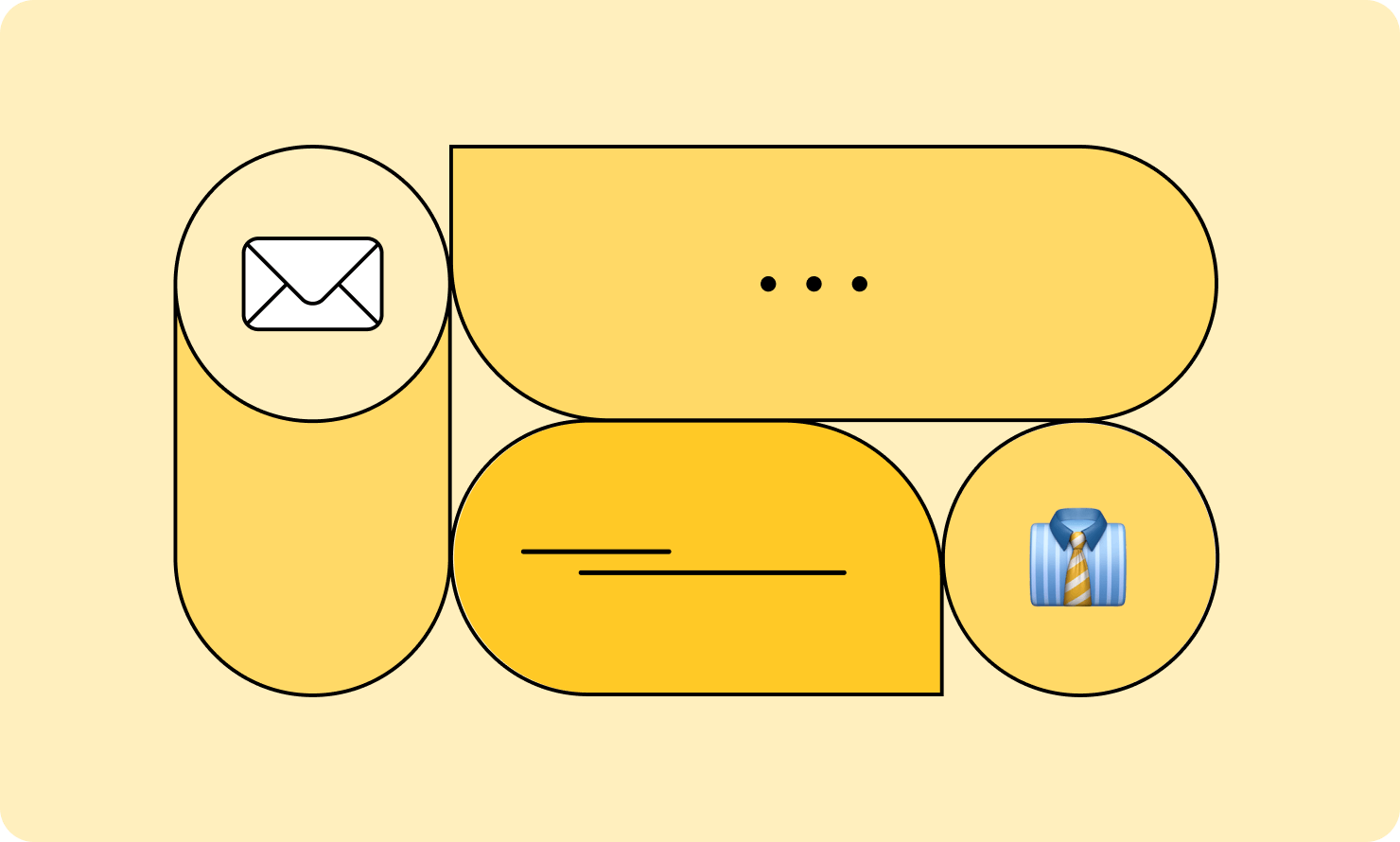Email has long been the backbone of professional communication. From asking a professor for an extension to dropping a “Per my last email” when a coworker misses something important, most of us—around 92% of online adults—have used email to get our message across.
While tools like texting and instant messaging are go-to channels for everything from casual chats to business conversations, email still excels when structure and formality matter most. It’s the standard for academic and professional communication, which makes knowing how to write a professional email an important part of your toolkit. Writing an email like a text, for example, can make the wrong impression in certain situations.
In this guide, we’ll show you how to write emails professionally for personal, formal, or business contexts, including some examples you can use right away.
Why is it important to know how to write emails in a professional setting?
When’s the last time you reached out to someone you didn’t know well, like a hiring manager, a professor, or a potential client? How’d you do it? Chances are, you emailed them.
But email isn’t just about introductions. It’s also how you maintain clear, professional communication over time. Whether you’re kicking off a project, following up on feedback, or resolving an issue, the way you write your emails sets the tone for your entire relationship. While a clear, respectful message with an appropriate tone can help you create a strong connection, a vague or overly casual message can stop it in its tracks.
That’s part of why email remains essential, even in a world full of Zoom calls and Slack threads. It’s reliable, widely used, and ideal for structured, high-stakes communication. It gives you full control over your message’s presentation, down to the word choices, text styling, and format, so it’s interpreted exactly how you intend.
What makes an email professional?
Not all emails are created equal. Your email to a friend looks a lot different from an email to a hiring manager or a customer. What sets professional emails apart is their structure, tone, and attention to detail.
A professional email is:
- Purposeful: It gets to the point quickly and clearly, without unnecessary filler.
- Respectful: It uses a polite tone and appropriate language, no matter the subject or recipient.
- Well-structured: It’s easy to read, with logical flow, short paragraphs, and often a clear call to action.
- Error-free: It avoids typos, slang, and overly casual phrasing.
- On-brand: It reflects your professionalism, whether you’re writing on behalf of your company or yourself.
This doesn’t mean your emails have to be stiff or robotic. A professional email can still feel friendly and approachable while formally getting your message across.
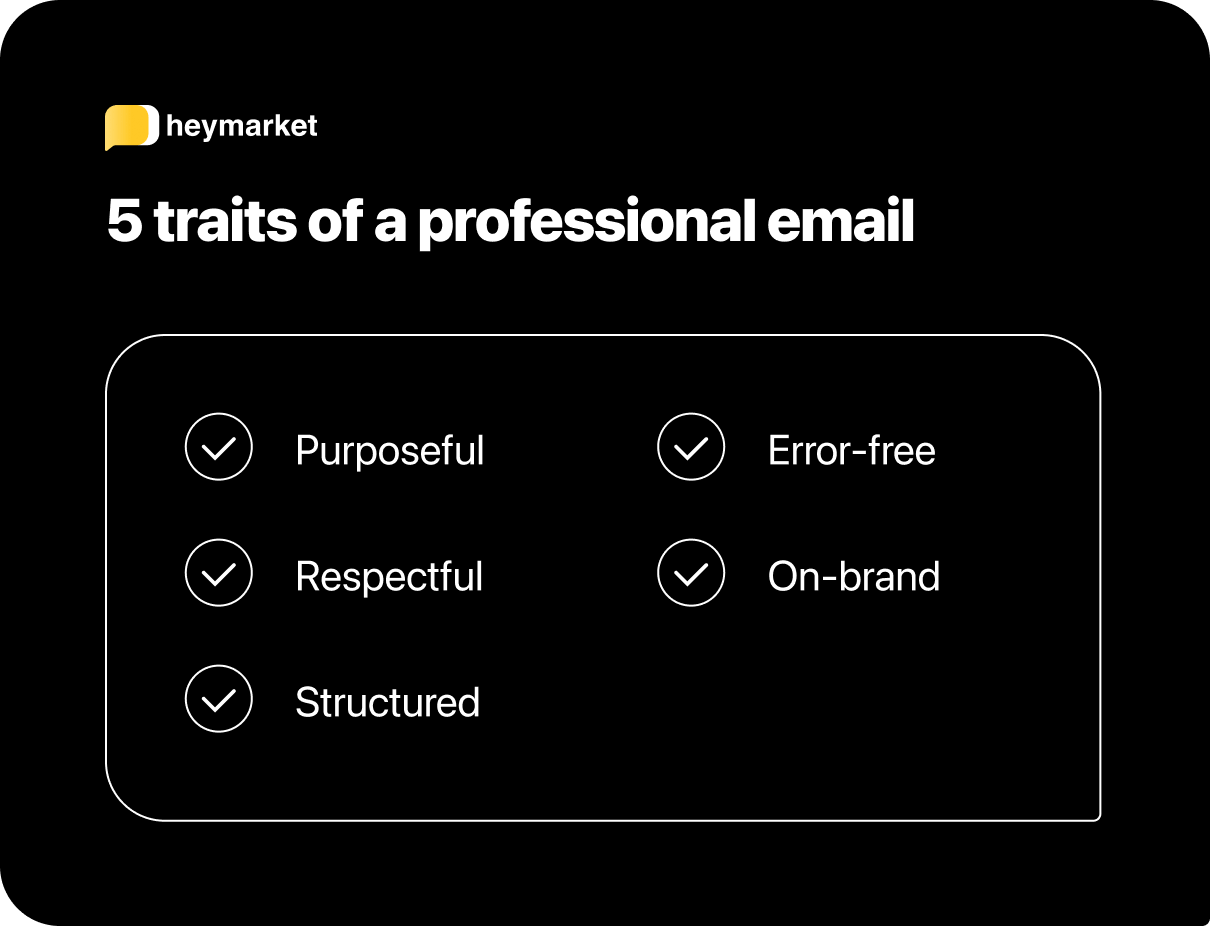
10 best practices for writing a professional email
Writing formal emails can feel intimidating, especially if it’s a high-stakes opportunity or a new connection. You want to sound professional without coming across as stiff, clear without being too blunt, and respectful without appearing overly deferential. At the same time, you need to get your message across or achieve something with your message, like establishing next steps or getting answers to important questions.
Here are some best practices to help you draft polished, purposeful emails for any professional situation.
1. Use a professional email address
Stick with a variation of your name or your company domain. Personal or playful handles (like coolguy1996@hotmail.com) can undermine your credibility before your recipient even opens the email.
2. Write a clear subject line
Make it easy for the recipient to understand what your message is about. Keep it short, specific, and action-oriented, like “Team sync rescheduled” or “Request for feedback on proposal” instead of “Hey Jan.” Your recipient should be able to search for and find your message in their inbox by its subject.
3. Greet the recipient appropriately
In the body of your email, use “Hi [First Name]” in most professional settings. If it’s more formal, “Dear [Title] [Last Name]” is a safe bet. Always double-check names and titles for accuracy.
If you don’t know the recipient’s name, try addressing their role or team, like “Hello Support Team” or “Dear Hiring Manager.” For more general situations, “Good morning” or “Good afternoon” offers a friendly, neutral tone. “To whom it may concern” can work in formal contexts, but it’s better to tailor the greeting if you can.
4. Start with context, then get to the point
Open with a quick sentence of background if needed, then state the purpose of your email. Use short paragraphs or bullet points to keep your message clear.
5. Match your tone to the situation
Professional doesn’t mean inhuman. Aim for a tone that’s respectful and clear, but still reflects your voice. Consider your relationship with the recipient and adjust accordingly.
6. Format for readability
Avoid long blocks of text. Use line breaks, bullet points, and emphasis (like bold or italics) to guide the reader, but don’t make it look like a MySpace profile from the 2000s. Keep in mind that many recipients will read your message on mobile devices, so aim for formatting that’s easy to scan on a smaller screen.
7. Use tools to polish your message
Not sure if your message hits the right tone? Use a free email generator to quickly refine tone, adjust formality, or clean up phrasing—especially if you’re short on time or unsure how your message sounds.
8. End with a clear next step
Make it obvious what you’re asking for. Whether it’s setting a meeting, reviewing a file, or replying to a question, help the reader take action.
9. Sign off professionally
Use a sign-off that fits your email’s tone, like “Best,” “Thanks,” or “Sincerely.” Don’t forget to include your full name, role, and any relevant contact details in your signature.
10. Always proofread
Before hitting send, give your email one last look. Check for typos, tone, and clarity. If it’s high stakes, step away for a minute and come back to it with fresh eyes. Or, send it to a trusted friend or colleague for another opinion.
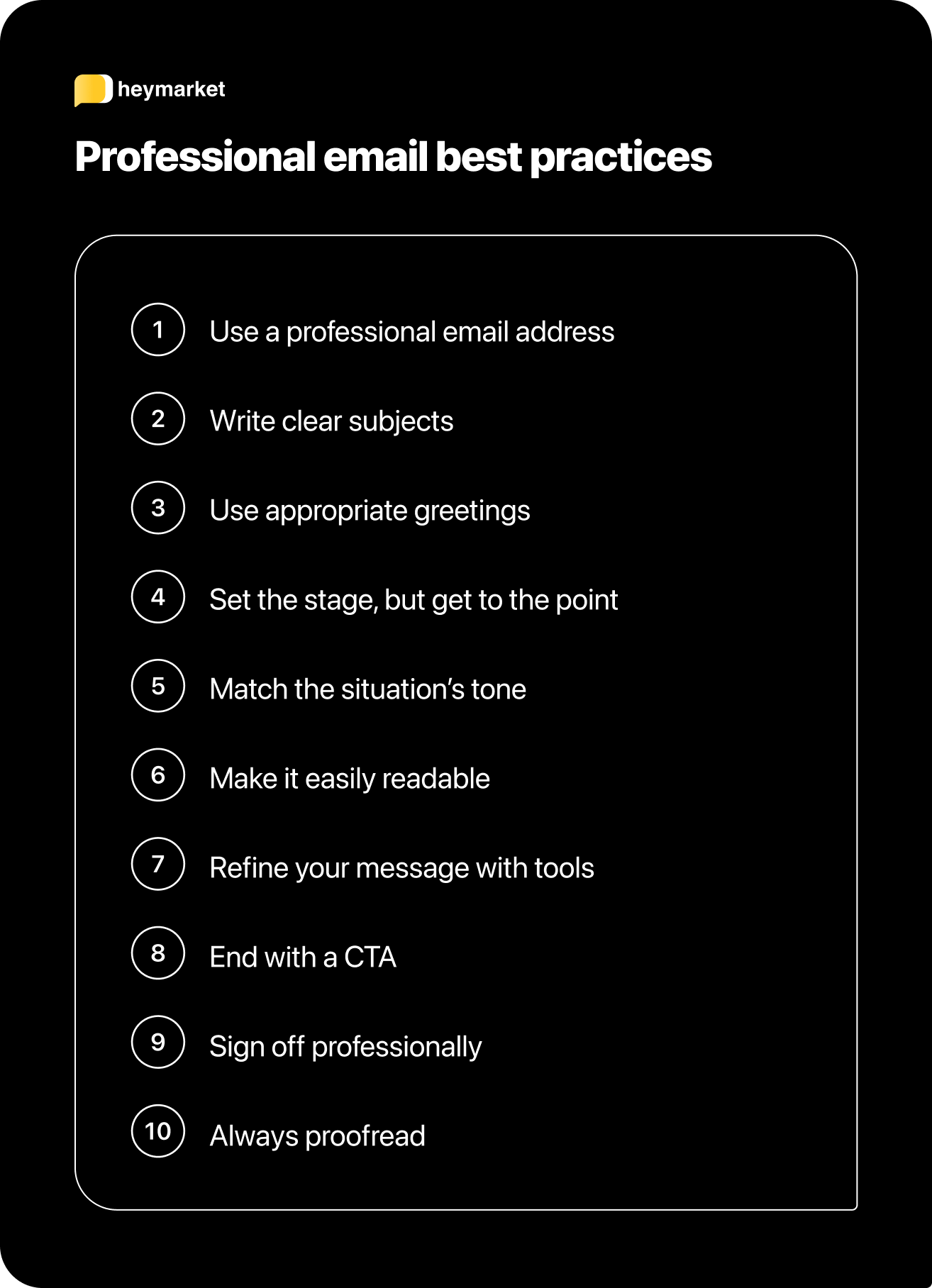
Examples of professional emails
Sometimes the hardest part of writing an email is figuring out how to start. These quick examples show how to structure clear, respectful messages in a variety of everyday scenarios—and give you something to copy or build on when you’re stuck.
1. Connecting with a new contact
This type of email is perfect for introducing yourself to someone you haven’t interacted with before, like a prospective partner, mentor, or client.
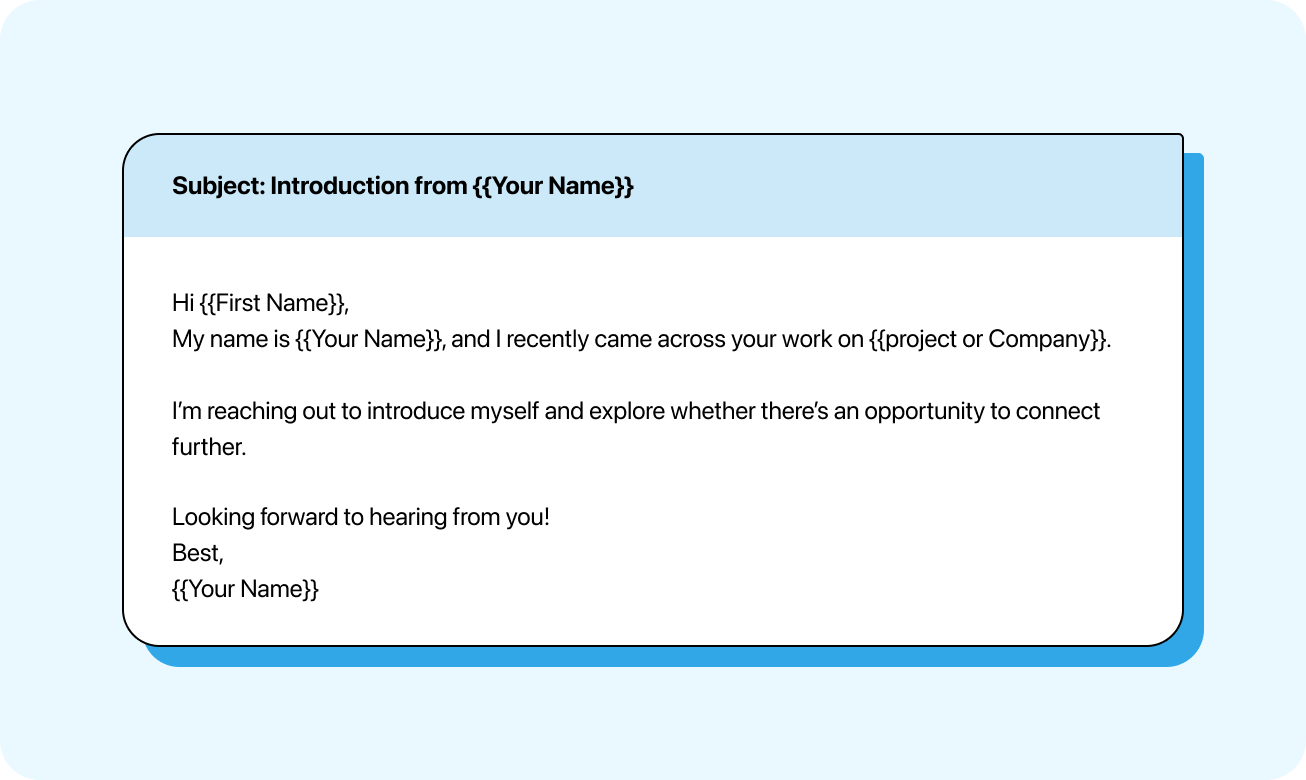
2. Following up after no response
If you haven’t heard back from a previous message, this kind of email helps you follow up politely without adding pressure.
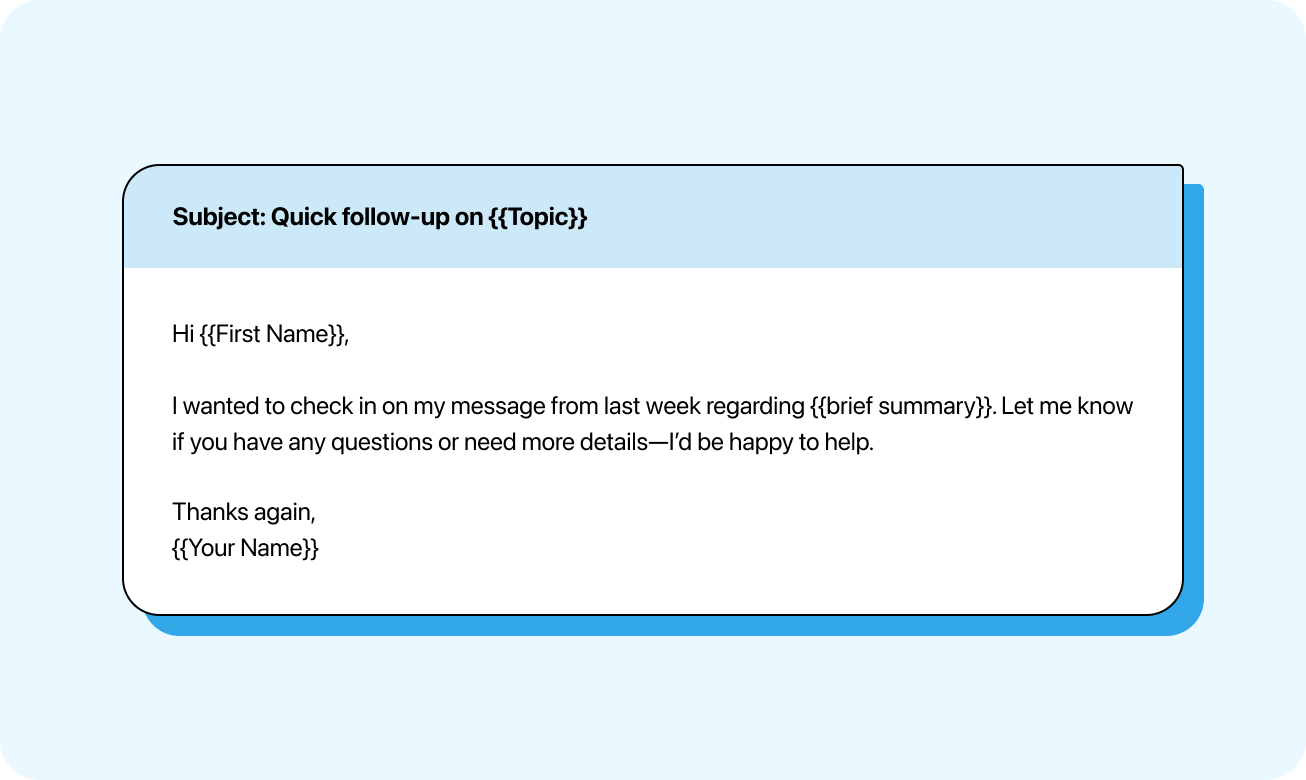
3. Scheduling a meeting
When you’re trying to find a time to meet, offering a few options makes it easier for the other person to say yes. Include your time zone if you’re reaching out to someone living outside of your local area.
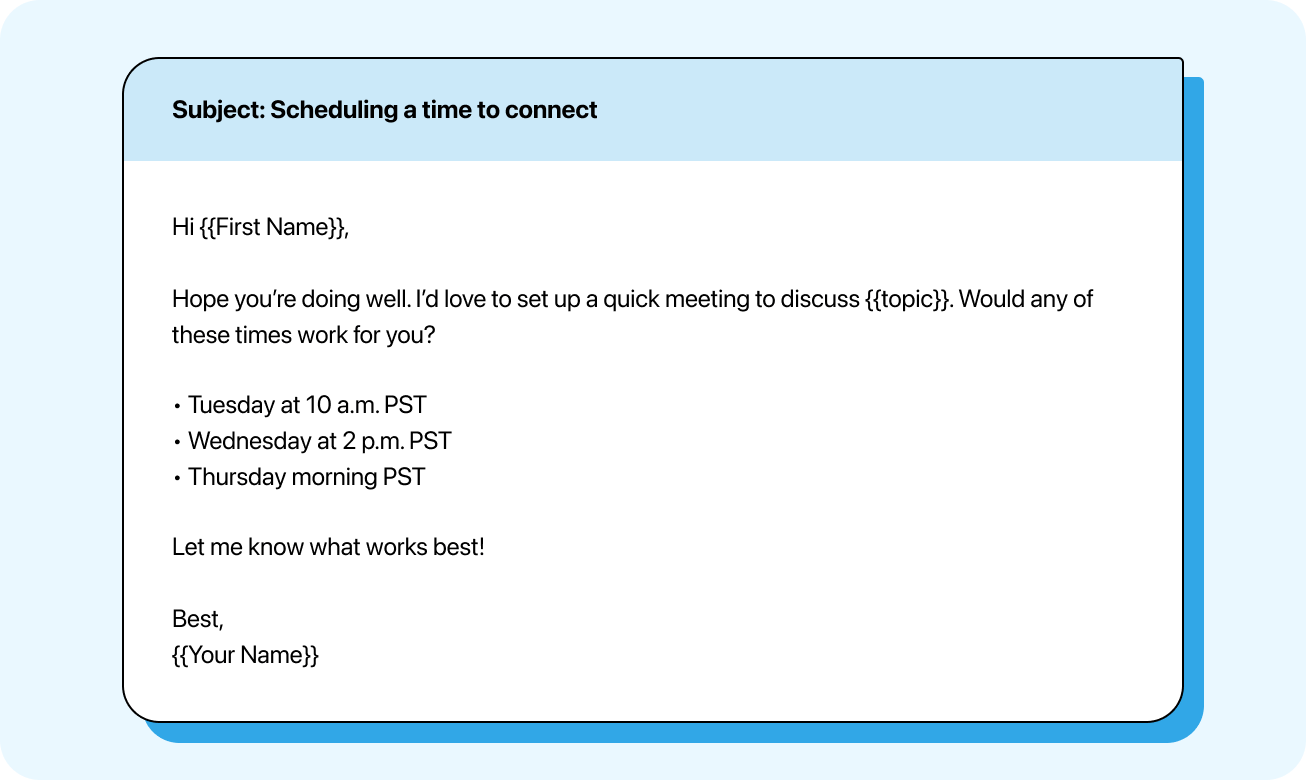
4. Sending a reminder
A short, friendly reminder helps keep things on track, whether it’s for a deadline, a meeting, or a next step.

5. Asking a question
Sometimes you just need quick clarification. Here’s how to ask without overcomplicating it.
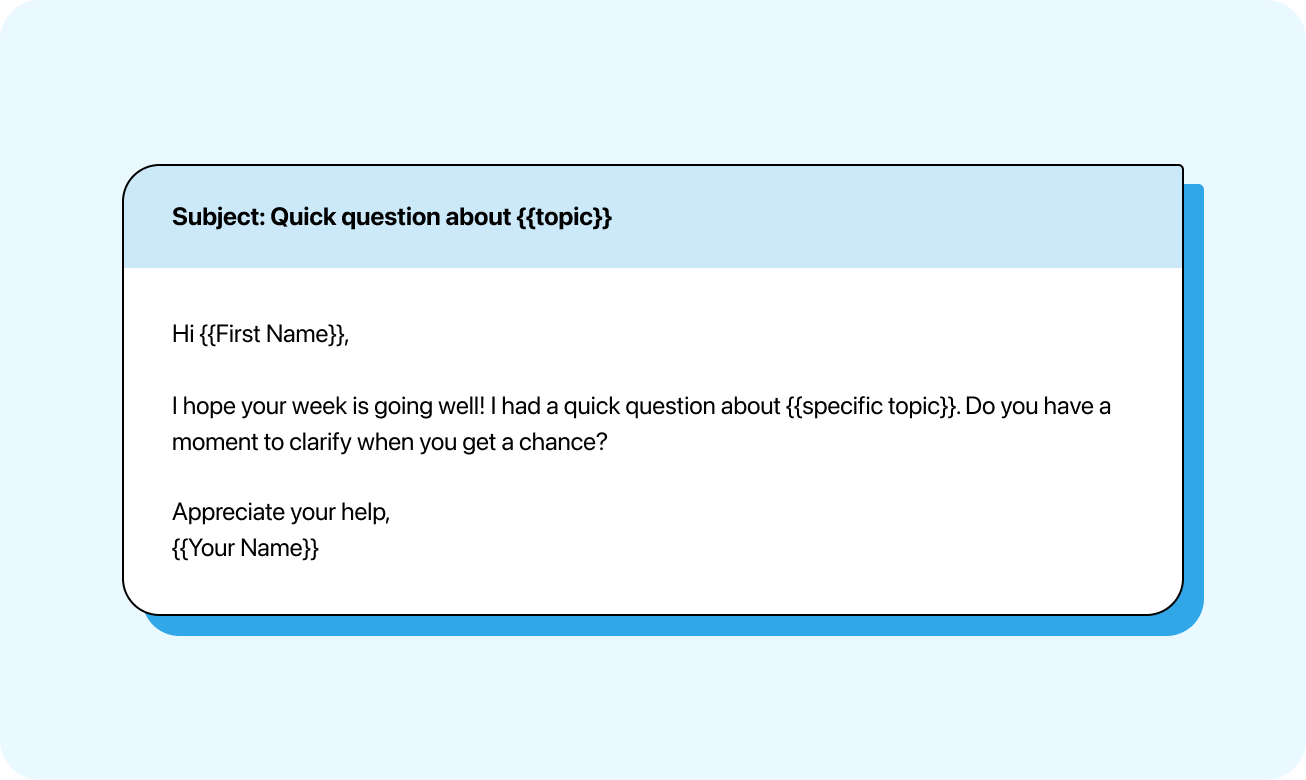
6. Requesting feedback
This type of message is useful when you’re seeking input on a proposal, project, or performance.
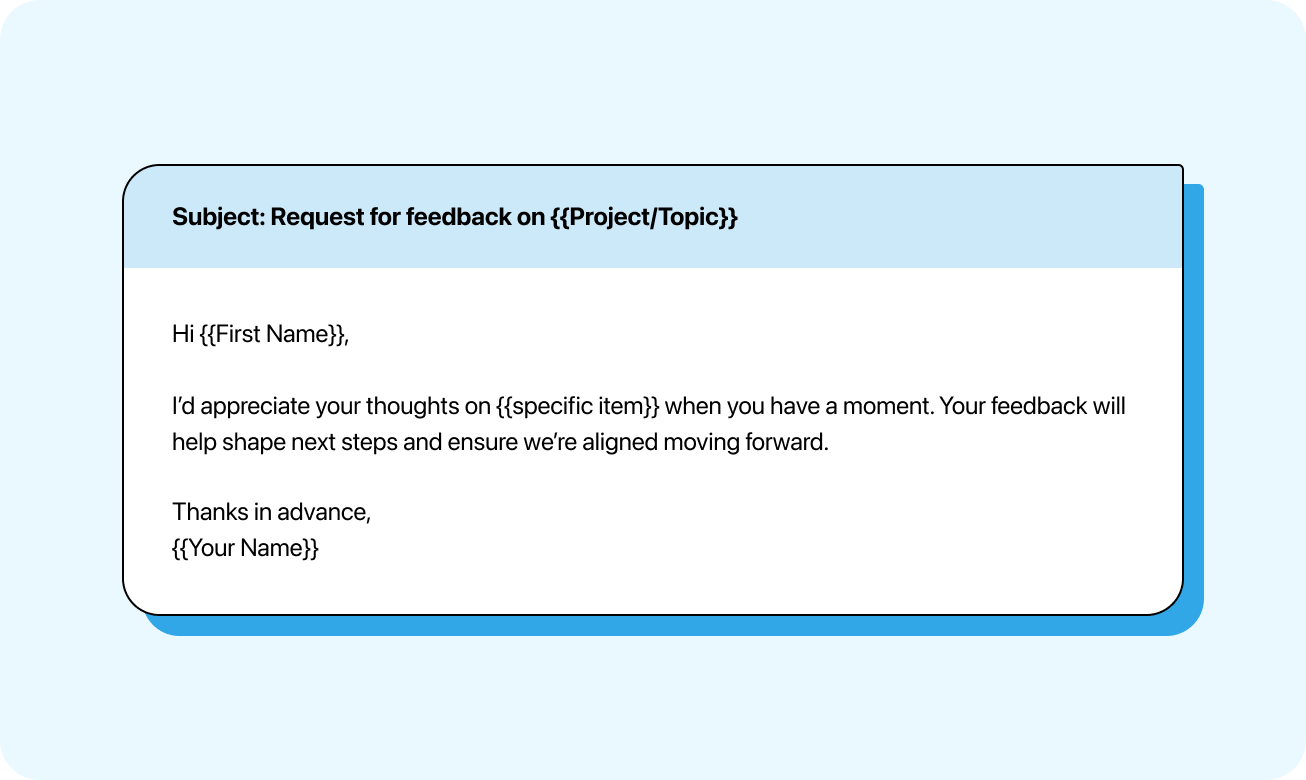
7. Responding to a complaint or concern
Use this kind of email for customer support, HR, or team management scenarios.
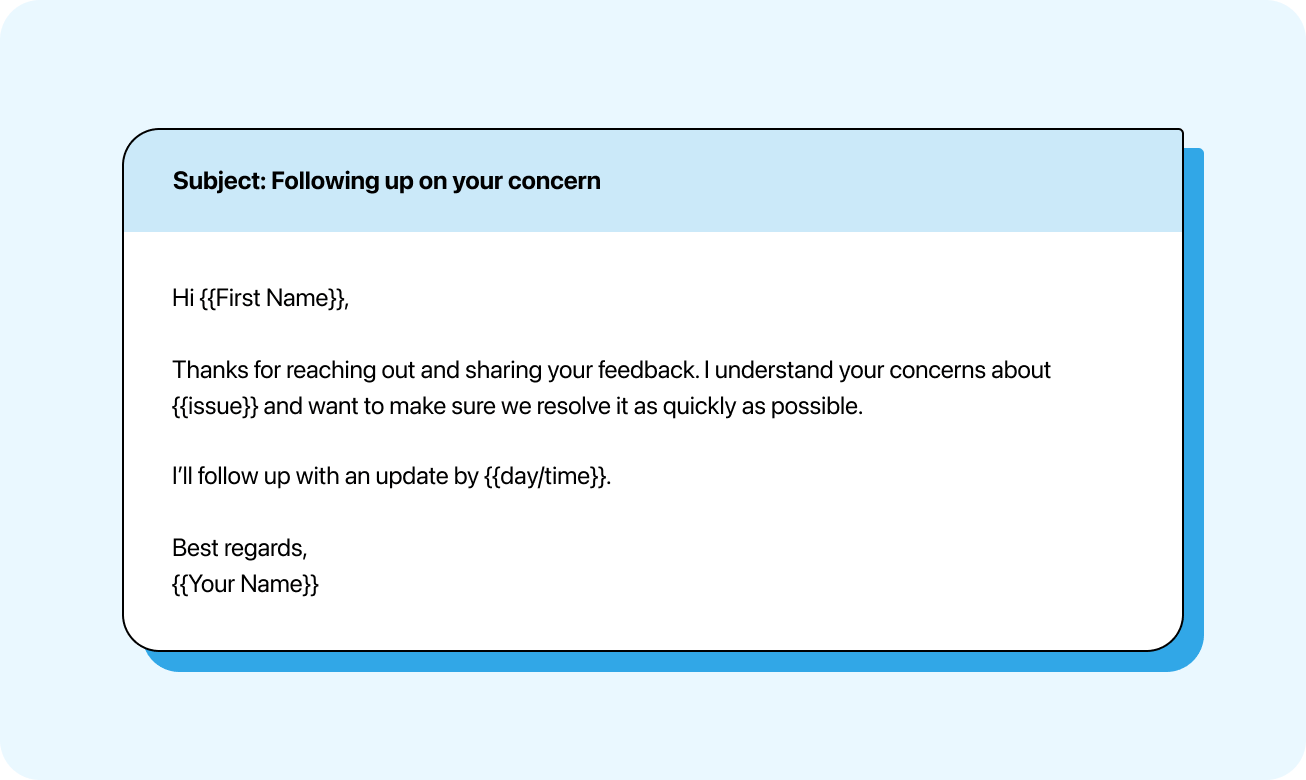
8. Thanking someone after a meeting or event
A short-and-sweet thank-you email helps reinforce relationships and show appreciation.
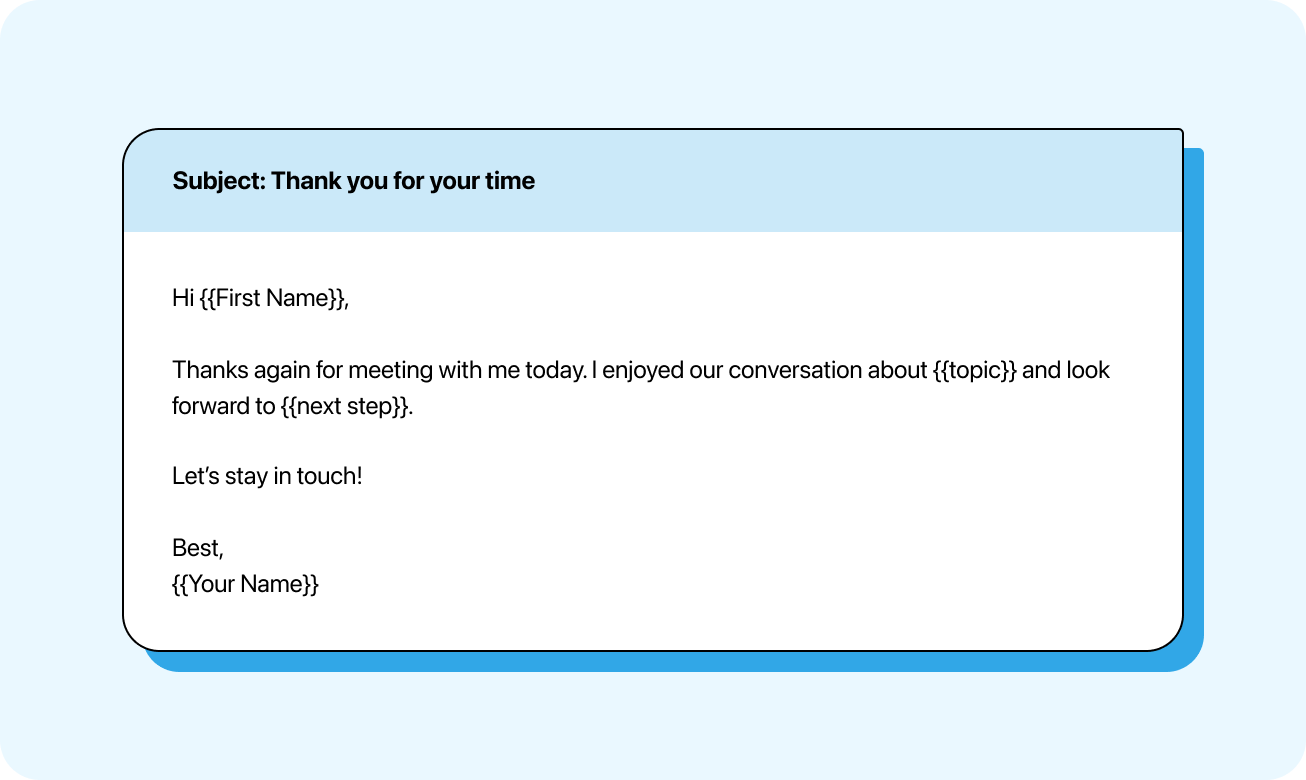
9. Announcing a change or update
A quick announcement email is useful for notifying customers, colleagues, or partners of an important change.
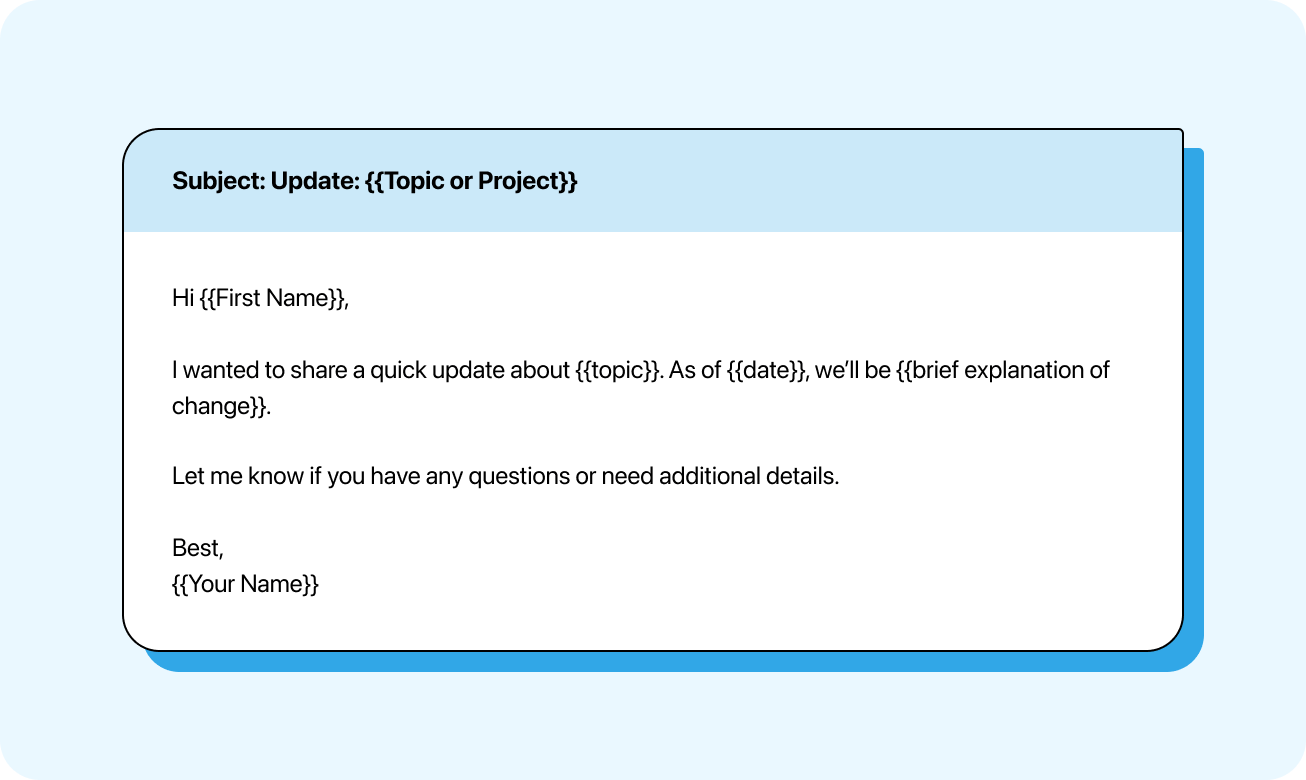
10. Apologizing for a delay or mistake
The right email can help you acknowledge and address a missed deadline or error.
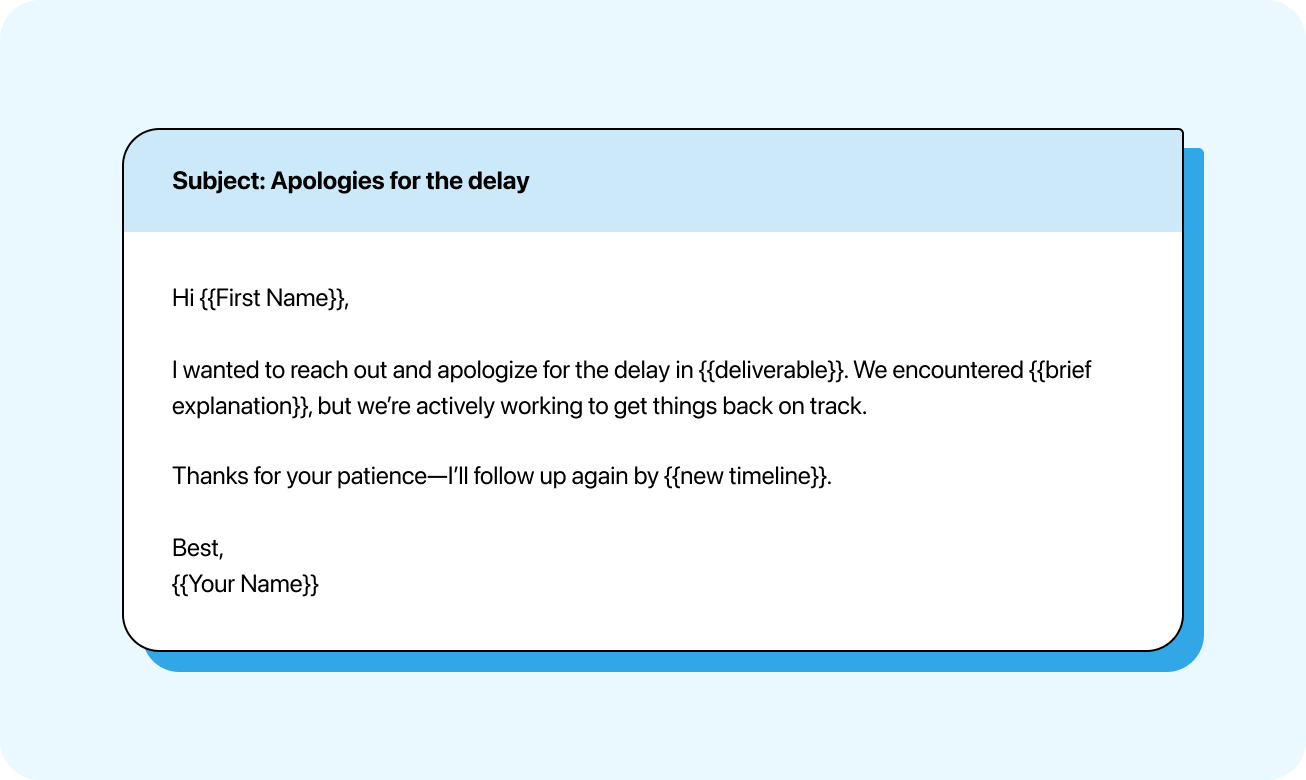
Wrapping up: mastering the professional email
Writing a professional email isn’t about getting every word perfect—it’s about being clear, respectful, and intentional. Whether you’re introducing yourself, following up, or addressing a sensitive topic, how you write shapes how your message is understood and received.
When your emails have the right structure and tone, they do more than share information. They help you build trust, encourage action, and reflect your professionalism, both as an individual and as part of a team.
But remember that your emails don’t have to be perfect. They just need to be clear, intentional, and appropriate—from the sender line to the subject to the sign-off. By following a few proven practices and staying focused on your message, you can write emails that strengthen relationships, streamline communication, and move work forward with confidence.
Using email for business? Our new omnichannel shared inbox can help you streamline and scale SMS and email for customer service, sales, and marketing.




